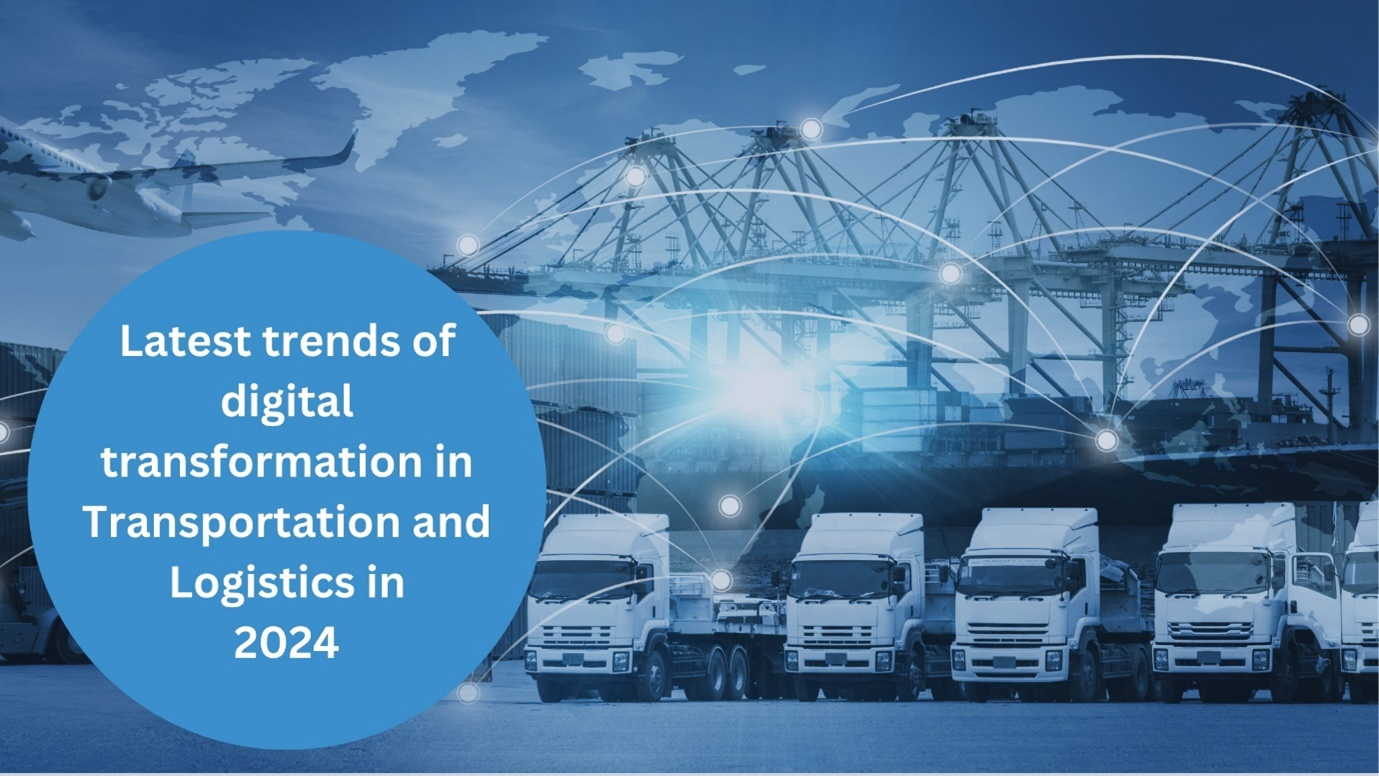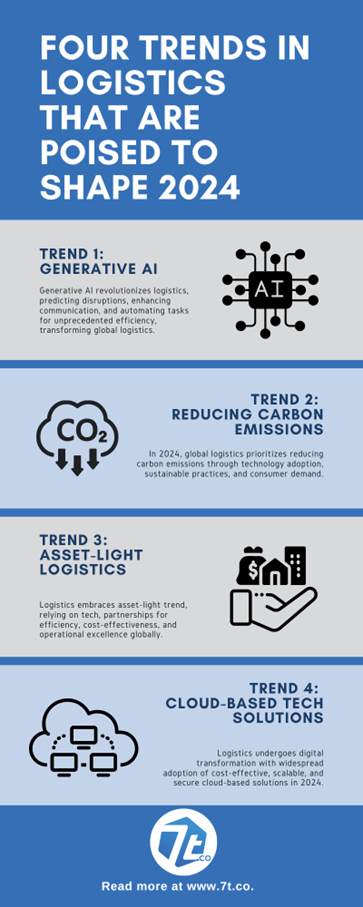Before we get into what’s happening at the start of 2024, let us first take a trip down memory lane and reflect on 2023 and what happened in the world of logistics!
The logistics industry encountered its fair share of challenges this past year, from strikes to bankruptcies. However, amidst the challenges, there was a silver lining, a shining moment of resilience and unity you might say. For those who are unaware we are talking about the FreightWaves’ F3 event. Despite facing low freight rates, companies strived to enhance efficiency and explore innovative business models. Even, startups in the Freight Tech space faced funding obstacles, but the determination of founders stayed strong with the increasing use of digital solutions that led to the introduction of new players revolutionizing efficiency.
The industry also transformed its workforce dynamics. Education played a pivotal role, with companies investing more in the learning and development of their employees, putting a greater emphasis on logistics programs. At the same time, technologies such as AI business solutions and Machine Learning gained recognition.
As we set our sights on 2024, challenges persist, but the groundwork laid by Digital Transformation in transportation and logistics promises to fortify the sector for a more efficient future.
So now, let’s dive into the four trends of Digital Transformation in transportation and logistics that are poised to shape 2024!
Trend 1: Generative AI
Have you ever wondered how artificial intelligence could revolutionize the logistics sector? Generative artificial intelligence (AI), is a groundbreaking solution that is set to redefine the technology landscape in 2024. This advanced technology goes beyond conventional AI, offering complex solutions to enduring logistics challenges.
Imagine a world where logistics staff can communicate more effectively in real time. This is possible with chatbots, and virtual assistants driven by generative AI. This technology excels in handling labor-intensive tasks such as forecasting and report generation, raising productivity standards for logistics teams. With generative AI, supply chain interruptions become a thing of the past as the technology predicts delivery exceptions and identifies causes for unfulfilled scheduled deliveries.
With their 360-degree coverage, control tower applications become the eyes and ears of the logistics network, quickly identifying concerns like route deviations, weather abnormalities, or potential breaches of Service Level Agreements (SLAs). This real-time insight empowers on-the-ground personnel and operational managers to handle issues effectively, ensuring a seamless flow of goods. 69% of companies admit to lacking essential insight into their supply networks [source: FinancesOnline], making generative AI technologies a crucial ally in ensuring visibility and proactive management.
In the AI-driven future, human involvement in logistics management might become secondary. So, brace yourself for a transformation that will reshape how global logistics works.
Trend 2: Reducing Carbon Emissions
In 2024, the focus on reducing carbon emissions is crucial for logistics companies. It’s not surprising as logistics and transportation industries contribute to 8% of global greenhouse gas emissions.
The United States remains a significant contributor to global transportation-related emissions, accounting for about a quarter of the total. In 2022, the U.S. transportation industry released a staggering 1.84 billion metric tons of carbon dioxide (GtCO2) [Source: Statista].
Technology plays a significant role in reducing carbon emissions in the logistics sector. The industry is adopting new technological advancements to decrease Return to Origin (RTO). Third-party logistics (3PL) companies, for example, have introduced a digital solution to automate order confirmation, reducing errors and shipment rejections. This automation leads to cost savings in shipping and packing, making the logistics sector more cost-effective and environmentally friendly.
Logistics organizations also utilize Non-Delivery Reports (NDR) to prevent unnecessary returns, reduce shipping and packaging costs, and lower carbon emissions. By leveraging advanced algorithms and big data analytics, logistics companies optimize delivery routes, avoiding unnecessary detours and reducing fuel consumption and carbon emissions.
The use of Internet of Things (IoT) sensors enables logistics companies to track the location and condition of goods during transit, optimizing supply chains and reducing waste and carbon emissions. Automation technology, such as warehouse management systems (WMS), operates with higher efficiency levels, decreasing energy requirements for lighting and temperature control, thus reducing the carbon footprint.
The evolution of technology in the electric vehicle (EV) market, including intelligent charging infrastructures and battery swapping, offers an environmentally friendly approach to reducing carbon emissions in the logistics industry. For example: Battery electric trucks can lower the greenhouse gas intensity of freight by 9% to 35% across various truck classes when compared to diesel.
Trend 3: Asset-Light Logistics
Escalating warehouse costs, expensive fleet management, and the complexities of the labor market contribute to the increasing popularity of the asset-light logistics paradigm. This approach enables companies to prioritize customer needs while reducing reliance on physical assets for operations, ultimately lowering operating expenses compared to asset ownership.
Globally, 63.5% of businesses currently engage third-party logistics (3PL) providers for transportation [Source: Statista]. Asset-light logistics offers an agile solution for online merchants to efficiently manage peak shipping periods across diverse geographical areas, countering the challenges posed by traditional, capital-intensive logistics methods.
The asset-light business model uses technology and partnerships to minimize physical asset ownership. Various technological advancements contribute to the success of asset-light logistics.
- Digital platforms and marketplaces: facilitate load matching and dynamic pricing, enhancing overall efficiency.
- Telematics and IoT devices provide real-time visibility and predictive maintenance for assets.
- Cloud computing: enables data storage, analytics, collaboration, and communication.
- Business process automation and robotics: streamline warehouse processes
- Machine learning and AI: optimize demand forecasting and route planning.
- Blockchain: enhances supply chain transparency, and mobile app development aids real-time communication and order tracking.
In summary, technology plays a pivotal role in enabling asset-light logistics, offering tools for efficient resource allocation, real-time visibility, data-driven decision-making, and collaborative supply chain management. This results in increased flexibility, cost-effectiveness, and overall operational excellence for companies in the logistics industry.
Trend 4: Cloud-Based Tech Solutions
A notable trend in logistics for 2024 is the widespread adoption of cloud-based solutions by businesses to manage their operations. It is one of the main reasons behind the growing Digital Transformation in the transportation and logistics industries. These solutions offer enterprises numerous advantages, such as the elimination of inefficiencies and the reduction of hazards, resulting in accelerated operations. Using cloud-based solutions in logistics operations also enhances cost-effectiveness, control, scalability, and security. It eliminates the need for installing complex and expensive hardware infrastructure. Cloud-based solutions offer infrastructure scalability to accommodate growing demand, and importantly, companies can avoid the necessity for total system replacement. Integration of these cloud-based solutions into existing logistics systems is seamless, providing a flexible and efficient solution for businesses.
In a Nutshell…
In 2023 the logistics industry faced challenges but showcased resilience. The emergence of generative AI promises to revolutionize communication, predict disruptions, and enhance supply chain visibility. Tackling environmental concerns, a focus on reducing carbon emissions through tech innovations like IoT and automation is on the rise. Asset-light logistics gains traction, leveraging technology for efficiency, while cloud-based solutions dominate 2024, offering cost-effective, scalable, and secure operations. Embracing these trends paves the way for an efficient and sustainable future in the logistics sector.











